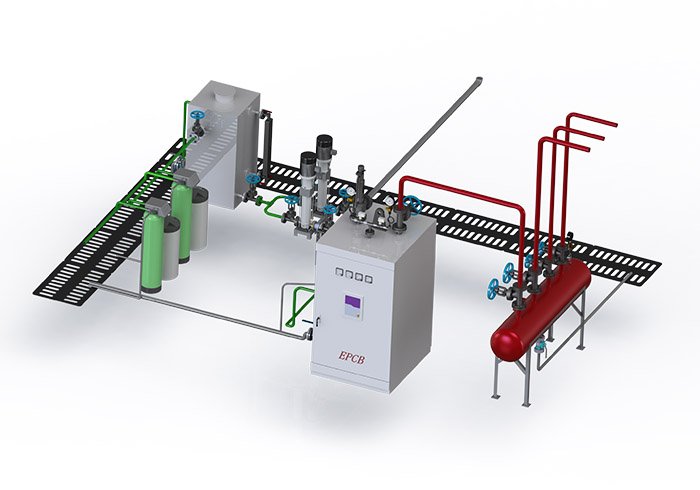Do you know how crucial purge valves are for your industrial boiler's efficiency and safety?
At EPCB, a leading manufacturer of industrial steam boilers, we know the value of regular maintenance. It prevents dangerous situations and ensures top performance.
A purge valve is key in managing vapors, reducing pollution, and boosting system efficiency.
Our guide will show you how to find, check, test, and maintain purge valves in your industrial boiler. This knowledge helps you spot problems early, avoiding costly downtime and safety risks.
Understanding Purge Valves in Industrial Boilers

At EPCB, we know purge valves are crucial in our industrial steam boilers. They remove air and non-condensable gases, ensuring safe and efficient boiler operation.
A purge valve, also known as a canister purge valve, is vital for air quality control. In industrial boilers, it removes air and gases before startup, ensuring safe combustion.
In industrial steam boilers, purge valves are critical for safety. They remove air and gases, preventing explosions and ensuring proper combustion ratios. EPCB's boilers are designed with these valves for system integrity.
Purge Valve Function | Importance in Industrial Boilers |
Removing air and non-condensable gases | Prevents potentially explosive conditions |
Ensuring proper air-to-fuel ratios | Maintains safe and efficient combustion |
Proper purge valve function is vital for safety, regulatory compliance, and system integrity. A faulty valve can cause unburned fuel buildup, leading to explosions. Thus, ensuring correct valve function is essential for a safe environment.
The Importance of Regular Purge Valve Inspection

Regularly checking purge valves on industrial boilers is crucial for safety and efficiency. At EPCB, our experience confirms that regular inspections are key for optimal boiler performance.
Safety Implications of Faulty Purge Valves
A faulty purge valve can lead to explosive environments due to incomplete gas purging. Regular inspections help catch issues before they cause valve failure, protecting people and equipment. Correctly functioning purge valves significantly reduce accident risks.
Faulty purge valves pose serious safety risks, including boiler explosions. Our focus on regular inspections aims to mitigate these risks and ensure a safe workplace.
Efficiency and Performance Benefits
Properly functioning purge valves enhance boiler efficiency by ensuring optimal combustion from startup. They maintain the right air-to-fuel ratio, improving fuel efficiency and reducing energy waste.
Regulatory Compliance Requirements
Many industrial facilities face strict rules on boiler safety systems. This includes mandatory inspections and documentation of purge valve functionality. Standards like NFPA85 demand proof that purge valves work as specified by the manufacturer.
Following these regulations and keeping accurate records of purge valve checks helps avoid expensive fines. It also ensures the facility keeps running smoothly.
Types of Purge Valves Used in Industrial Boilers

At EPCB, we've seen various purge valves in industrial boilers. Each type has its own benefits, despite their shared purpose. Their design and how they fit into a system differ greatly.
Electromechanical Purge Valves
Modern industrial boilers often use electromechanical purge valves. These valves are controlled by solenoids and work well with automated systems. They offer precise control and can be set to operate at specific times, making them perfect for large applications where timing is key.
Manual Purge Valves
Manual purge valves are less common in new setups but still found in many older boilers. They are simple and reliable, needing less electronic control. We suggest manual valves for smaller setups or as a backup for emergencies.
Automatic Purge Valves
Automatic purge valves are the most advanced, using sensors to monitor and actuate purging without human input. In our high-efficiency boilers, we use automatic valves with extra safety features. This ensures they work reliably, even if the main controls fail.
Choosing the right purge valve depends on several factors. These include the boiler's size, the application's needs, the control system's complexity, and regulatory compliance. Each valve type needs specific maintenance and testing, which we'll discuss in detail later.
Essential Tools for Checking Purge Valves
At EPCB, we emphasize the importance of having the right tools for inspecting purge valves. The correct equipment ensures a safe and accurate inspection process.
Basic Hand Tools Required
To start the inspection, you'll need basic tools like adjustable wrenches, screwdrivers, pliers, and a flashlight. Depending on your boiler model, you might also need specialized valve tools.
Diagnostic Equipment
A digital multimeter is essential for testing electromechanical purge valves. It helps check resistance, continuity, and voltage supply to solenoid-operated valves. You may also need pressure gauges and vacuum testers for further diagnostics.
Safety Equipment
When working with industrial boilers, never forget safety equipment. Always wear heat-resistant gloves, safety glasses, and protective clothing when inspecting purge valves on hot systems. For operational boilers, ensure you have proper lockout/tagout equipment to safely shut down the system before any inspection or maintenance.
Using a multimeter to test a purge valve is quick and simple. For most industrial uses, look for resistance readings between 20-30 ohms on solenoids. However, this can vary by manufacturer and model.
Preparing for Purge Valve Inspection
EPCB stresses the importance of thorough preparation for purge valve inspections. Proper preparation ensures safety and accurate diagnostics. It's crucial for both the safety of personnel and the reliability of diagnostic results.
Safety Precautions Before Starting
Before starting the inspection, it's crucial to follow lockout/tagout procedures. This ensures the boiler won't start during the inspection. Electrical isolation and securing fuel supply valves are key steps. For hot boilers, allowing enough cooling time is vital to avoid burns and ensure accurate test results.
It's also essential to verify that system pressure has been properly relieved. This is done through appropriate blowdown procedures.
Boiler System Documentation Review
Reviewing your boiler's documentation is a critical step. This includes OEM manuals, maintenance records, and specific purge valve specifications. Knowing the normal operating parameters for your purge valve model is crucial. Different industrial boilers use valves with varying specifications.
Gathering Necessary Tools and Equipment
Gathering all necessary tools and equipment is vital. Ensure everything is in good working condition before starting. For team environments, a brief safety meeting is recommended. This meeting should cover the scope of work, potential hazards, and emergency procedures.
Preparation Step | Description | Importance Level |
Safety Precautions | Implement lockout/tagout, electrical isolation, and allow cooling time | High |
Documentation Review | Examine OEM manuals, maintenance records, and valve specifications | High |
Gathering Tools | Ensure all necessary tools and equipment are in good condition | Medium |
Locating the Purge Valve on Different Industrial Boiler Models

Knowing where to find the purge valve is key for effective boiler maintenance. As an EPCB expert, I can guide you through the typical locations of purge valves in various industrial boiler models.
Common Locations in Fire Tube Boilers
In fire tube boilers, which are common in many industrial applications, purge valves are typically located near the burner assembly at the front of the boiler. This strategic positioning allows for the effective evacuation of gases from the combustion chamber. For horizontal fire tube designs, the purge valve is often connected to the windbox or air plenum assembly.
Common Locations in Water Tube Boilers
Water tube boilers, prevalent in larger industrial applications, generally have purge valves positioned near the furnace area. These valves are often connected to the main air ducting system before it enters the combustion zone. In package water tube boilers, the purge valve may be integrated with the forced draft fan assembly to ensure proper air flow during the purging cycle.
Boiler Type | Typical Purge Valve Location |
Fire Tube Boilers | Near burner assembly, connected to windbox or air plenum |
Water Tube Boilers | Near furnace area, connected to main air ducting system |
EPCB Boiler-Specific Locations
For EPCB industrial boilers, we position our purge valves for optimal accessibility during maintenance. This ensures effective purging of the entire combustion chamber. In our standard EPCB fire tube models, the purge valve assembly is typically mounted on the front plate near the burner, often on the right side when facing the boiler front. Our EPCB water tube designs feature purge valves located on the windbox assembly, with clear labeling and access panels designed for easy maintenance.
For custom EPCB industrial boiler installations, it's essential to refer to the specific documentation provided with your unit. Valve locations may be modified to accommodate special installation requirements or additional safety features.
How to Check Purge Valve: Step-by-Step Process
At EPCB, we advocate for a systematic approach to inspect your industrial boiler's purge valve. This method is vital for maintaining the optimal performance and safety of your boiler system.
Visual Inspection Steps
Start with a detailed visual inspection of the purge valve. Look for any signs of physical damage, corrosion, or excessive heat discoloration on the valve body. These signs might indicate overheating issues or potential failures. Also, inspect all connecting pipes, fittings, and flanges for signs of leakage, such as mineral deposits, rust, or discoloration around connection points.
Examine the electrical connections on electromechanical purge valves. Look for loose wires, damaged insulation, corroded terminals, or any signs of electrical arcing. These issues can cause intermittent operation or complete failure of the purge valve.
Manual Operation Check
For manual operation checking, ensure the boiler is completely shut down and depressurized. Then, attempt to manually actuate the valve (if the design permits) to verify smooth operation without binding or excessive resistance. This step is crucial for understanding the mechanical integrity of the purge valve.
Checking for Leaks and Damage
When checking for leaks on pressurized systems, we recommend applying an approved leak detection solution around valve seals and connections while the system is under normal operating pressure. This should only be done by qualified personnel to ensure safety. Use diagnostic tools to check for internal leakage by listening for the characteristic hissing sound of gas passing through a valve that should be fully closed.
Document all findings during your inspection process, including photographs of any damage or abnormal conditions. This documentation will be valuable for maintenance planning and regulatory compliance. Remember, different purge valve designs require specific inspection techniques, so always refer to your EPCB boiler documentation for model-specific inspection procedures.
By following these steps, you can thoroughly check your industrial boiler's purge valve and ensure it's functioning correctly. Regular inspections like these are key to maintaining the efficiency and safety of your boiler system.
Testing Purge Valve Functionality
To verify that your purge valve is operating as expected, you'll need to perform a series of tests tailored to your valve type. At EPCB, we emphasize the importance of thorough testing to ensure the optimal performance of your industrial boiler system.
Pressure Testing Methods
For pressure testing methods, we recommend first verifying that the valve can hold pressure when closed. This typically involves isolating the valve and applying normal operating pressure to check for pressure drops that would indicate leakage. When pressure testing, always use calibrated pressure gauges and follow a gradual approach to pressurization, allowing time to observe stable readings before making determinations about valve condition.
Pressure Testing Step | Description | Expected Outcome |
Isolate the Valve | Close the valve and isolate it from the system. | No leakage observed. |
Apply Operating Pressure | Gradually apply normal operating pressure. | Stable pressure reading. |
Monitor for Leaks | Check for any pressure drops or signs of leakage. | No significant pressure drop. |
Electrical Testing for Solenoid Valves
For electromechanical purge valves with solenoids, electrical testing is essential. Begin by using your multimeter to check the resistance across the solenoid terminals, which should typically read between 20-30 ohms for most industrial applications. It's crucial to disconnect all electrical connections first to ensure accurate readings and prevent damage to control circuits or the multimeter itself.
Test the voltage supply to the solenoid during a normal purge cycle. Most industrial boiler purge valve solenoids operate on either 24V or 120V, depending on the control system design. Ensure that the voltage supply matches the specifications of your solenoid valve.
Interpreting Test Results
To interpret test results correctly, compare them to the manufacturer's specifications. Look at resistance values, actuation times, and pressure holding capabilities. Remember, temperature affects test results; a hot solenoid shows higher resistance than a cold one. Ensure it cools down before making final judgments.
Keep detailed records of all test results, including readings and conditions. This data is crucial for tracking valve performance and spotting issues early. It helps prevent complete failure.
Common Purge Valve Problems and Symptoms

Over the years, we've seen many purge valve issues in industrial boilers. At EPCB, we know how these problems affect boiler performance and safety. It's essential to understand these common issues to keep boilers running smoothly.
Valve Stuck in Open Position
A stuck open purge valve causes continuous air flow, wasting energy and leading to combustion instability. Symptoms include trouble maintaining combustion chamber pressure, flame instability, higher fuel use, and shutdowns. These issues can be costly and dangerous.
Valve Stuck in Closed Position
A stuck closed valve blocks the pre-purge cycle, causing safety lockouts and preventing startup. Modern systems generate error codes for incomplete purge cycles. This safety feature is critical to avoid dangerous operation.
Leaking Valves
Leaking valves show up as reduced boiler efficiency, inconsistent combustion, or performance decline. Even small leaks can cause significant energy loss and fuel consumption. Regular maintenance is vital to catch these issues early.
Electrical Failures in Solenoid Valves
Electrical failures in solenoid valves can cause intermittent operation or failure to respond. These problems might come from power issues, wiring damage, coil burnout, or control circuit failures. Systematic testing is needed for accurate diagnosis.
Knowing common purge valve problems and their symptoms helps operators maintain their boilers' performance and safety. Regular checks and maintenance are essential to avoid major issues.
Troubleshooting Faulty Purge Valves
At EPCB, we know how crucial it is to fix purge valve problems for your industrial boiler's best performance. Finding and fixing a faulty purge valve needs a careful method. This ensures you pinpoint the exact issue before starting repairs.
Diagnosing Mechanical Issues
Start with mechanical problems by looking for physical blockages that might stop the valve from moving. Debris, scale, or damaged parts can all hinder the valve's function. Check the valve stem and actuator linkage for signs of binding or wear. These can stop the valve from working right, even with correct control signals.
Diagnosing Electrical Issues
For electrical problems in solenoid-operated purge valves, start with the basics. Make sure the solenoid has the right voltage, check for blown fuses, and look for damaged wiring. Use a multimeter to check the solenoid coil's resistance. If it's way off from what the maker says, the solenoid needs to be replaced.
When to Replace vs. When to Repair
Deciding to repair or replace a valve depends on its age, repair part availability, and how critical it is. For safety-critical parts like purge valves, we often suggest replacing them rather than fixing them. Small issues like loose connections can be fixed, but major damage or corrosion means it's time for a new one.
Remember, the cost of downtime and safety risks of a bad repair should influence your choice. Sometimes, spending more on a new valve is cheaper in the long run.
Purge Valve Maintenance Best Practices
Keeping purge valves in good shape is key for your industrial boiler's reliability and life span. At EPCB, we've got detailed maintenance tips to keep your purge valves running well and lasting longer.
Recommended Maintenance Schedule
We suggest a regular maintenance plan. This includes quarterly visual checks and annual tests of all valve parts. For boilers always running or in tough environments, do monthly checks and semi-annual tests. This proactive approach helps catch problems early.
Cleaning Procedures
Clean your purge valve regularly with the right cleaner or solvent. Gently brush off any buildup from inside and outside to keep airflow and function smooth. Pay extra attention to orifices, seats, and diaphragms. Even small particles can mess up sealing and operation. Use compressed air for cleaning but only at safe pressure to avoid damage.
Lubrication and Parts Replacement
For mechanical valves with moving parts, lubrication is key. Use only approved lubricants for your valve type and use. Set a schedule for replacing parts with known lifespans, like gaskets and O-rings. Keep detailed records of each maintenance session, including parts replaced and any unusual findings. Always test the valve after maintenance before putting the boiler back to work.
When to Call a Professional Service Technician
Knowing when to call a pro for your industrial boiler's purge valve issues is crucial. At EPCB, we stress the importance of maintenance and basic troubleshooting. But there are clear signs that mean it's time to get professional help.
Signs That Indicate Professional Help is Needed
Get a pro right away if you see fuel leaks around the purge valve. This is a safety and environmental risk. If you keep getting fault codes or safety lockouts, despite trying to fix it yourself, it's time for a pro to diagnose with the right tools.
Other warning signs include unusual sounds during the purge cycle, like loud banging or whistling. Also, any overheating signs, like discolored metal or damaged wiring, mean you need expert help.
What to Expect from Professional Service
When you call for professional service, the technician will do more than just check the purge valve. They will evaluate the entire system, as valve issues often point to bigger problems. They use specialized tools for testing, inspect the control circuits, and ensure the valve works with the boiler system.
A skilled technician will fix the immediate problem and look for other issues. They might suggest ways to prevent future problems. After fixing your system, they will give you a detailed report of their work. This report is important for keeping your maintenance records up to date and meeting regulatory standards.
Conclusion: Ensuring Optimal Boiler Performance Through Proper Purge Valve Maintenance
Proper maintenance of purge valves is essential for your industrial boiler's efficiency and safety. By following the right inspection, testing, and maintenance steps, you protect your investment and keep everyone safe. Working purge valves are key to safe operation, removing harmful gases before they ignite.
At EPCB, we offer the latest advice on keeping these critical components safe. We urge you to keep detailed records of all maintenance and inspections. Regular, thorough maintenance of purge valves ensures your boiler runs well, meets regulations, saves energy, and keeps everyone safe.
FAQ
What are the symptoms of a faulty canister purge valve?
A bad canister purge valve can trigger the check engine light. It may also cut down on fuel efficiency, cause the engine to idle roughly, and make starting the engine harder.
How do I know if my purge valve is stuck open or closed?
If the purge valve is stuck open, you might smell a lot of fuel, see less fuel efficiency, and the engine could stall or idle badly. If it's stuck closed, the engine might not run right, and you could notice a drop in performance.
What is the role of the purge valve in the evaporative emission control system?
The purge valve controls the flow of fuel vapors from the tank to the engine. This lets the engine burn off extra vapors and cuts down on emissions.
Can a faulty purge valve cause damage to other engine components?
Yes, a bad purge valve can harm other engine parts, like the catalytic converter, if not fixed. It's vital to fix purge valve problems quickly to avoid more damage.
What tools are needed to test a purge valve?
To test a purge valve, you'll need a multimeter, vacuum pump, and some basic tools. The multimeter checks the electrical circuit, and the vacuum pump tests the valve's function.
How often should I inspect and maintain my purge valve?
It's important to check and maintain your purge valve regularly for the best engine performance. You should inspect it during routine maintenance, like oil changes, and replace it when needed.
Can I replace the purge valve myself, or do I need a professional mechanic?
While you can replace the purge valve yourself, it's wise to get a professional mechanic if you're not sure or lack experience with engine parts.
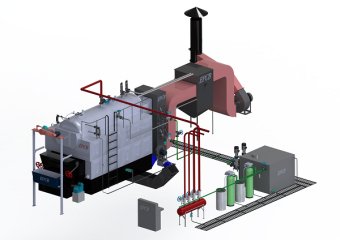 Steam Boiler
Steam Boiler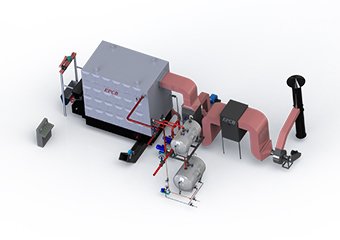 Thermal Oil Boiler
Thermal Oil Boiler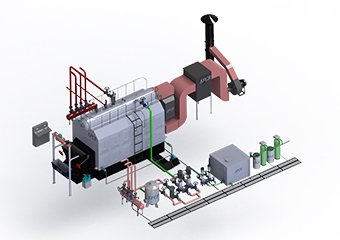 Hot Water Boiler
Hot Water Boiler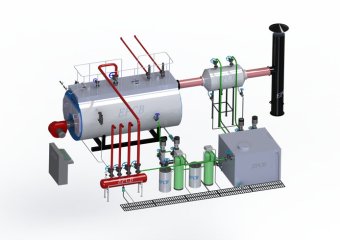 Steam Boiler
Steam Boiler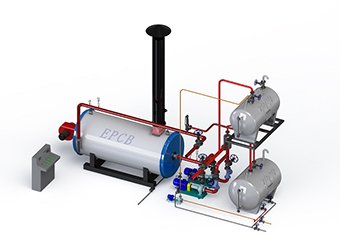 Thermal Oil Boiler
Thermal Oil Boiler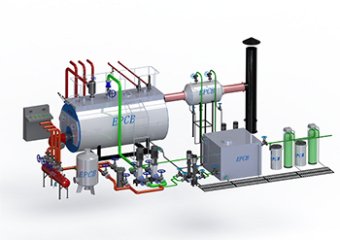 Hot Water Boiler
Hot Water Boiler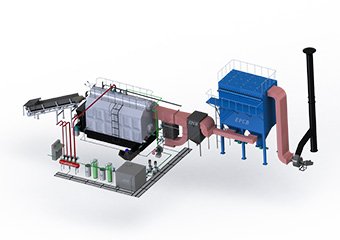 Steam Boiler
Steam Boiler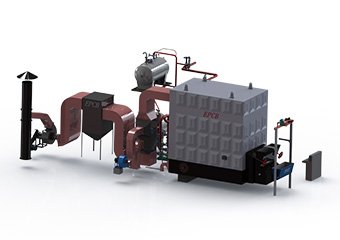 Thermal Oil Boiler
Thermal Oil Boiler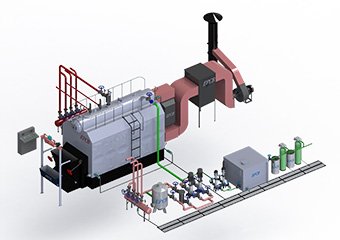 Hot Water Boiler
Hot Water Boiler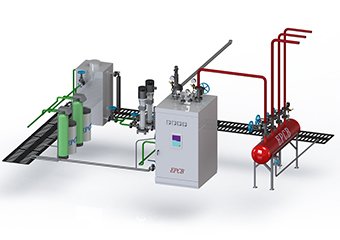 Steam Boiler
Steam Boiler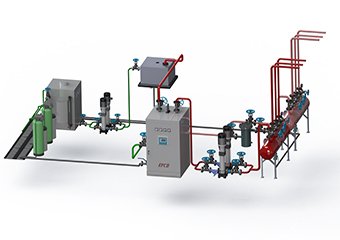 Hot Water Boiler
Hot Water Boiler



















